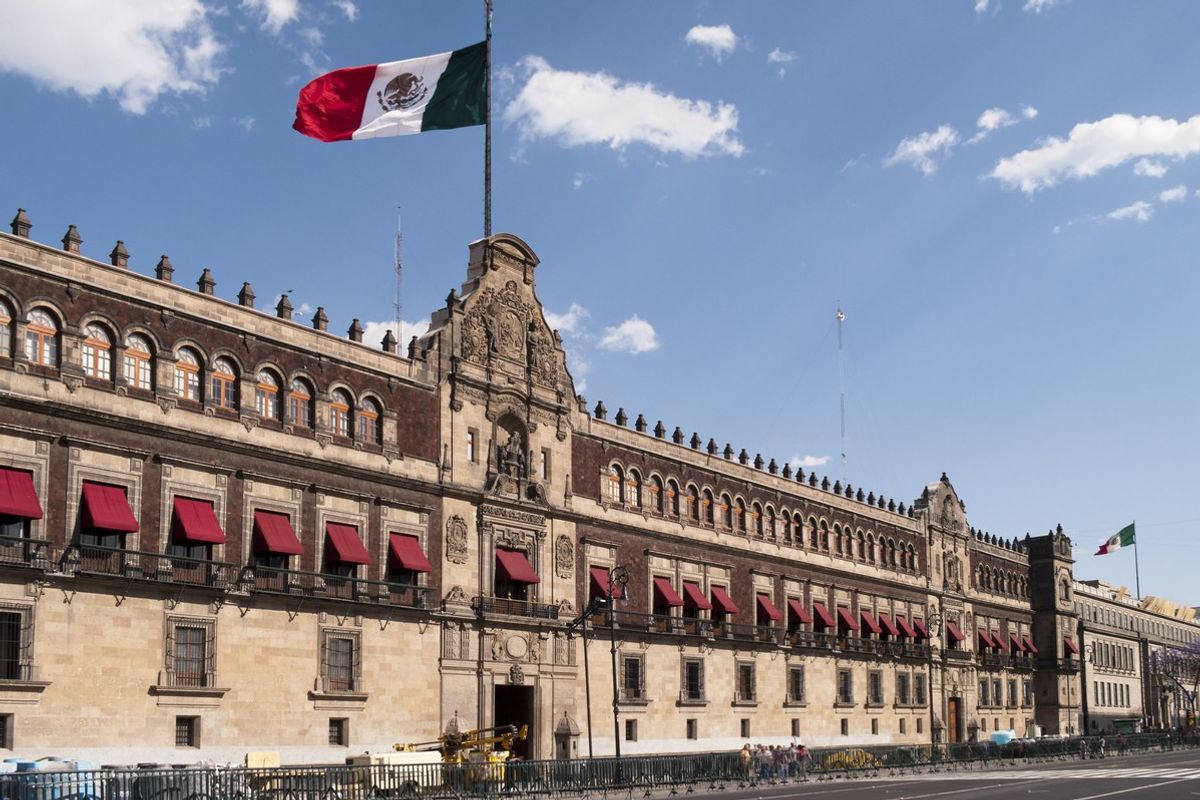The increase in violence over the last year has spread evenly across Mexico (as shown in Figure 1 below) which compares state-level intentional homicide rates per 100,000 residents for the first ten months of 2015 (X axis) and 2016 (Y axis). There are a few states where homicide rates have declined, year-on-year, such as Coahuila, Chiapas, Durango, Querétaro Quintana Roo, and Nayarit. These states represent every region in the country. However, nearly every other state has seen an increase in its murder rate in 2016, compared to 2015. (It should be noted that Mexico continues to register an intentional homicide rate, 15.4 per 100,000 residents, that is much lower than Brazil’s, close to 24 per 100,000 residents, or Colombia’s, nearly 30 per 100,000 residents.)
Colima, Zacatecas, Michoacán, and Veracruz have seen dramatic increases in their murder rates over the last year. Guerrero, Chihuahua, and Sinaloa have registered very high murder rates consistently over the last three years. Although Chihuahua and Sinaloa, in contrast with Guerrero, had seen consistent declines in their high murder rates from 2012 to 2015, this year they reversed course. Guerrero has seen a steady increase in its murder rate since 2011.
Figure 1: Homicides in Mexican states during the first ten months of 2015 (X-axis) vs. 2016 (Y-axis)
How can these cases – with no apparent rhyme or reason to their geographical distribution – be explained? At first glance, state-level institutions play an important role in explaining different levels of violent crime, as they are the ones charged with combating common crime. State-level law enforcement institutions – state attorney general’s offices and police departments – and court systems, in general, are poorly staffed, trained, and equipped, and are particularly vulnerable to corruption. This combination of factors, though, cannot fully explain how Colima, a geographically very small and economically well-off state (hence, a priori, easier to police) has a murder rate 20 points higher than Guerrero’s, a very poor state of a much larger size (both geographically and in population).
Lurking beneath these issues are the powerful dynamics of the organized crime underworld. While not all intentional homicides can be traced back to organized crime (there is no government-sanctioned count of murders related to organized crime activities), the states with the largest increases in murder rates in 2016 have seen widening spirals of violence related to organized crime conflicts. This is not to say that organized crime is not present in places with lower murder rates, but rather that the states with spikes in murder rates are witnessing the rearrangement of previously stable equilibria.
Different organized crime groups are active in different areas, and their fortunes have waxed and waned over the years. The same cartel can be differentially prone to violence, depending on whether it is hegemonic or competitive in a drug market or along a trafficking route; whether it is internally stable or unstable; whether it is engaged primarily in drug trafficking or in a combination of rent-extracting activities – kidnapping, extortion, prostitution, human trafficking, etc.— and depending on to what degree it has been able to corrupt law enforcement and political institutions.
Among these criminal organizations, the Jalisco New Generation Cartel (CJNG, in the Spanish acronym) is up and coming. The CJNG is the heir to a long line of criminal organizations based in Jalisco state that came, went, split, and recombined over the decades. Currently, it is led by Nemesio Oseguera Cervantes and his son Nemesio Oseguera González. The cartel’s geographic base is Jalisco state, but it is known to have a presence in neighboring Nayarit, Zacatecas, Colima, Michoacán, and Guanajuato states, and also as far as the port city of Veracruz, on the Gulf of Mexico, and Tijuana, on the Mexico-U.S. border.
In the early 2010s, the CJNG was thought to be a local ally of the much larger Sinaloa Cartel, but with the passing of its archrivals Los Caballeros Templarios in Michoacán state, in 2014-15, and the arrest of Joaquín “El Chapo” Guzman, it has come into its own and seems to be challenging the Sinaloa Cartel in various locales. Chief among these is Colima state, where the port of Manzanillo, the second busiest on the North American Pacific Coast after Long Beach, is located. CJNG demonstrated its fighting prowess in May 2015, when Oseguera’s praetorian guard allegedly downed an Army assault helicopter in the mountains of southern Jalisco during an operation aimed at his arrest.
While the CJNG’s expansion may be fueling an increase in violence, it surely is not responsible for the entire rising tide of murders across the nation. As far as it is possible to gather information, the Sinaloa Cartel has rivalries with remnants of Los Zetas, the Juárez Cartel, and the Beltrán Leyva Organization. Los Zetas gangs, much diminished over the last five years, still control significant swaths of territory and pick fights with Gulf Cartel and CJNG cells along the Gulf of Mexico coast. A variety of gangs compete for turf in the Mexico City metro area and the neighboring cities of Puebla, Cuernavaca, and Querétaro, among others.
As far as the federal government’s security strategy is concerned, the Peña Nieto administration basically continued the Calderón administration’s policy, with minor changes. This strategy is based on use of the armed forces to fight organized crime groups, with the Navy as the tactical spearhead in kingpin interdiction operations, the Army for territorial control, and the Federal Police to patrol highways and critical infrastructure. The main difference between the Peña and the Calderón policies is the much-touted coordination with state-level security forces. While Calderón made a point of criticizing state governors for being part of the insecurity problem, Peña Nieto claimed to work hand in hand with state governors to improve operations. This policy has been mostly rhetorical, and there have been numerous examples where federal security forces “cooperate” with state and local authorities only after their operations conclude.
A second prong of the security strategy of both the Calderón and Peña Nieto administrations has been the attempt to integrate the command of police forces of different levels of government. But both federal administrations have failed to produce a workable legal arrangement, and both have watched as state governments reproduce the scheme at the local level in whichever way best suits them. The most the federal government has been able to do is prod state governments into having their security forces vetted to federal standards. The fact that nearly half of the police officers in states like Sinaloa and Veracruz failed to pass their exams but continue on the beat, goes to show how difficult it is to reform local security forces in reality.
The use of the military to fight organized crime has been more or less a constant over the last decade, but without consistent results: the murder rate has risen, then fallen, then risen again. This might seem to support anyone inclined to view the federal government’s strategy as useless. While overall the security strategy seems to have had little effect on murder rates, one has to look at the subnational distribution of changes in violent crime rates to have a better sense of where and when the use of the military has worked. One could argue that without the military’s intervention, things could have been much worse in places like Tijuana, Ciudad Juárez, Reynosa, Tampico, or Monterrey. However, the military’s presence in states like Guerrero, Michoacán, or Sinaloa really seems to have made little difference, if not made things worse.
This is where the reform of local law enforcement and security forces comes into play. The “miracle” of improved security environments in border cities like Tijuana, Juárez, and Monterrey had much to do with the reform of local and state police departments and attorney general’s offices. These changes were, unfortunately, not always long-lived or have eroded over time. Yet, in states where attempts to reform these institutions fell by the wayside from the start, their security environments have remained extremely challenging. One need only to look at Tamaulipas state to confirm how the failure to reform these offices has led to an utterly failed state. In other places where these institutions never worked, or worked only in an authoritarian guise, like Guerrero, the realities of failed statehood are much more patent.
Is the heightened level of violence (and its causes) a national security concern for the United States? It depends where you look. Some Mexican cities are much more violent than American ones, but the converse is also true. Without losing sight of the institutional problems in Mexico, the fact is that violence in Mexico is largely fueled by two illicit trades: drugs moving north and weapons moving south across the border. With the legalization of marijuana for recreational use gaining traction at the state level in the United States, the region is entering an interesting period. Should the international marijuana trade be disrupted, even if only partially, what will happen to organized crime dynamics in Mexico? Will organized crime groups that depend on this source of income dwindle or switch to other rent-extracting activities? Will they invest in expanding production areas in the U.S.? Will they be replaced by other groups focusing on other drugs? These are all empirical questions.
Nevertheless, the institutional problems remain. The U.S. and its citizens have learned to live with Mexico over many decades. Consecutive U.S. governments looked the other way when it was grossly evident that Mexico was not a democracy, or even as it attempted to become one, it did not respect the rule of law. This did not stop the drive to integrate their economies and will likely not impede this trend in the future. No matter how much the U.S. spends on training Mexican security forces, it will never spend enough. The real solution to this problem is the reform of the Mexican judicial systems. If there is something that Mexican politicians-cum-criminals have never stopped fearing, it is federal courts in Texas. As long as this resource is available to prosecute them, there is a light in the dark for Mexicans to follow.











